Fleet Rehabilitation and Modernization or as it
was called, "FRAM", was a program to extend the useful lives of World
War II era U.S. Navy ships, specifically destroyers, at a time the Eisenhower Administration was seeking
major cuts in U.S. defense spending. Yet during this time, the Navy faced an
ominous threat as over 300 Soviet fast-attack submarines were in service by 1957
while at the same time, U.S. naval destroyers were faced with "Block
Obsolescence" due to their inability to meet this threat.
Known as "31-Knot Burke" for his
exploits as a destroyer squadron commander in the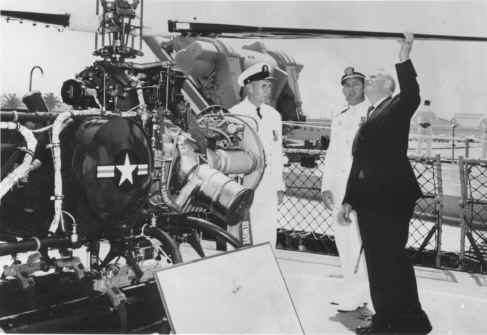 pacific theatre during World
War II, now Chief of Naval Operations, Admiral Arleigh Burke (1902-1996) (seen right-examining a QH-50C
DASH on the USS
Anderson at San Diego on Sept. 1, 1962) sought ways to save the
precious destroyers of the U.S. Navy he had once commanded during his battles in
the South Pacific during World War II against the Japanese and make them capable
of facing the modern Soviet submarine threat. His solution was not
just to overhaul the machinery but to install the weapons of the time that were
state-of-the-art and in many ways, those weapon systems remain that way to this
very day.
pacific theatre during World
War II, now Chief of Naval Operations, Admiral Arleigh Burke (1902-1996) (seen right-examining a QH-50C
DASH on the USS
Anderson at San Diego on Sept. 1, 1962) sought ways to save the
precious destroyers of the U.S. Navy he had once commanded during his battles in
the South Pacific during World War II against the Japanese and make them capable
of facing the modern Soviet submarine threat. His solution was not
just to overhaul the machinery but to install the weapons of the time that were
state-of-the-art and in many ways, those weapon systems remain that way to this
very day.
 To counter the growing strategic threat the Russian
submarine force was forecasted to pose with long range torpedoes in the 1960's,
Admiral Burke found a solution to that problem in a combination of "stand-off" weapon systems called DASH and ASROC.
To counter the growing strategic threat the Russian
submarine force was forecasted to pose with long range torpedoes in the 1960's,
Admiral Burke found a solution to that problem in a combination of "stand-off" weapon systems called DASH and ASROC.
ASROC
(Anti-Submarine ROCket) (seen left) was the
Anti-Submarine Warfare (ASW) system for 1-5 mile ranges. DASH (Drone
Anti-Submarine Helicopter) was a 900 lb Coaxial drone helicopter with ASW ranges
to 22 miles. While both ASROC and DASH delivered the same weapon, that being the
MK-44 Torpedo, DASH was special in that it could be recalled if
the target turned out to be friendly. DASH also was reusable; something ASROC was
not.
FRAM was not a simple process.
It involved reconstruction of 3 classes of destroyers, 3 classes of Destroyer
Escorts, and the Destroyer Tenders that would keep those Destroyers armed and
supplied. Differing among classes of destroyers, the
FRAM application was different for each class and extensive- the FRAM destroyer
not only had its' hull and machinery refurbished, but a new superstructure was installed
as well. The Sumner and Gearing (a fourteen-foot stretch version
of the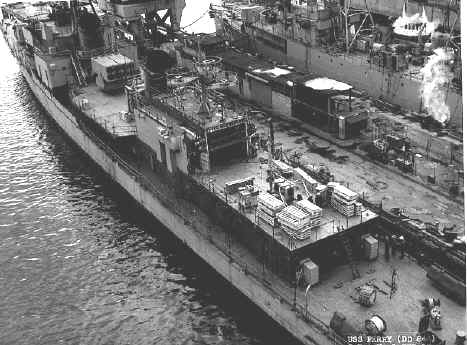 Sumner class) class destroyers held the greatest promise
for expansion of its platform into a force multiplier. There were two levels of
FRAM- FRAM MK I & MK II: Sumner class) class destroyers held the greatest promise
for expansion of its platform into a force multiplier. There were two levels of
FRAM- FRAM MK I & MK II:
1. FRAM MK I - developed primarily for the Gearing
class (USS PERRY (DD-844) seen right), it
was a complete reconstruction of the ship and much more than FRAM II.
FRAM I included the rebuilding of the superstructure,
rehabilitated the engines and electronics and installed ASROC, DASH, SQS-23
Sonar System, a new air-search, height-finding and SPS-10 surface search radar and two
triple MK 32 torpedo launchers. FRAM MK I required
the destroyer to lose one of it's twin 5-inch/38 cal. gun mounts. FRAM I extended
the life of a destroyer by 8 years.
2. FRAM II - developed primarily for the Sumners
class but did include most versions of Gearings,
was mostly a modernization program, however, not all Sumners received
FRAM (20) and not all Sumners that were, received DASH. Typical FRAM II
extended the life of a destroyer by about 5 years, installed DASH, MK 32
torpedo launcher, new air search, height and surface search radar and
variable depth sonar (VDS).
On this Page, we present to you the Navy
Destroyers that
received FRAM, information on ASROC and DASH as well as the business end of a
DD; its 5 inch/38 cal. gun. Click on a
picture/button below and enjoy your
journey into history!
|
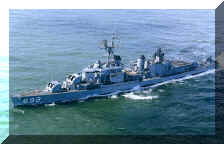 |
With the
Soviet submarine threat looming, the Navy faced a hard decision:
build new ships or modernize the still-in-use Fletcher, Sumner, and
Gearing class of Destroyers. While these remaining vessels were still in
service, they were badly in need of overhaul of their machinery, hulls,
and deck plating with their weapon systems obsolete. Enter the Navy's 1960
program called Fleet Rehabilitation And Modernization (FRAM). By
1965, 168 U.S. Navy Destroyers had received FRAM reconstruction /
modernization. Here
we present the Fleet Destroyers, Destroyer Escorts and Destroyer Tenders of FRAM.
|

|
|
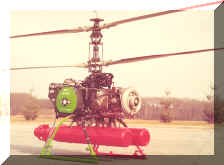 |
Seeking a better way to give
Destroyers longer-range stand-off (operating at a greater distance
from the enemy) weapons delivery capability, the Navy embarked on the
development of using a droned co-axial helicopter to deliver torpedoes
that was currently used in a manned configuration by the U.S. Marine Corp
for scouting purposes. Built by a small firm in New York, the Gyrodyne
Company was selected as prime contractor for this effort. From their first
gasoline, Porsche powered DSN-1 to the turbine-engined QH-50D helicopter
(seen left), Gyrodyne built and then managed the
DASH Weapon System as one of the key "new
weapon systems" installed during FRAM.
|

|
|
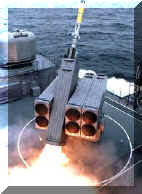 |
ASROC or
Anti-Submarine ROCket, was the Navy's
answer to combat Submarines that were within a 5 1/2 mile (10,000 yards)
range of the launching destroyer. Using the Mk-44 or Mk-46 acoustic homing
torpedo as the payload, the MK-112 rocket-thrown-torpedo system was
installed on the FRAM Mk-I ships and was the most successful
Anti-Submarine Warfare system created by FRAM. In fact, only recently was
ASROC retired from Navy Destroyers. Here is a history of ASROC and at the
bottom, a FRAM ASROC loading protocol to show you what was involved with
this weapon.
|

|
|
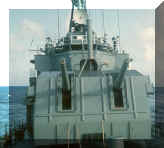 |
Originally installed in 175 Fletcher class
destroyers, the Mk 12 Mod 1, 5-inch/
38 caliber gun was one of the most successful surface weapons
of World War II. Either installed in a single barrel mount in the MK 30
gun mount or in the twin-barreled Mk 38 gun mount, each had the capability
of firing a 55 pound projectile over a 9 mile distance, and the
Fletcher/Sumner/Gearing class destroyers used these guns from WW II to
Vietnam is support of U.S. naval and ground forces. Here, we present some
information on this important destroyer weapon.
|

Special Thanks to Ed Zajkowski and The National Destroyermens' Museum, USS
Joseph P. Kennedy Jr. DD850 for ALL FRAM photos shown on this site. Thank you!


            

|
